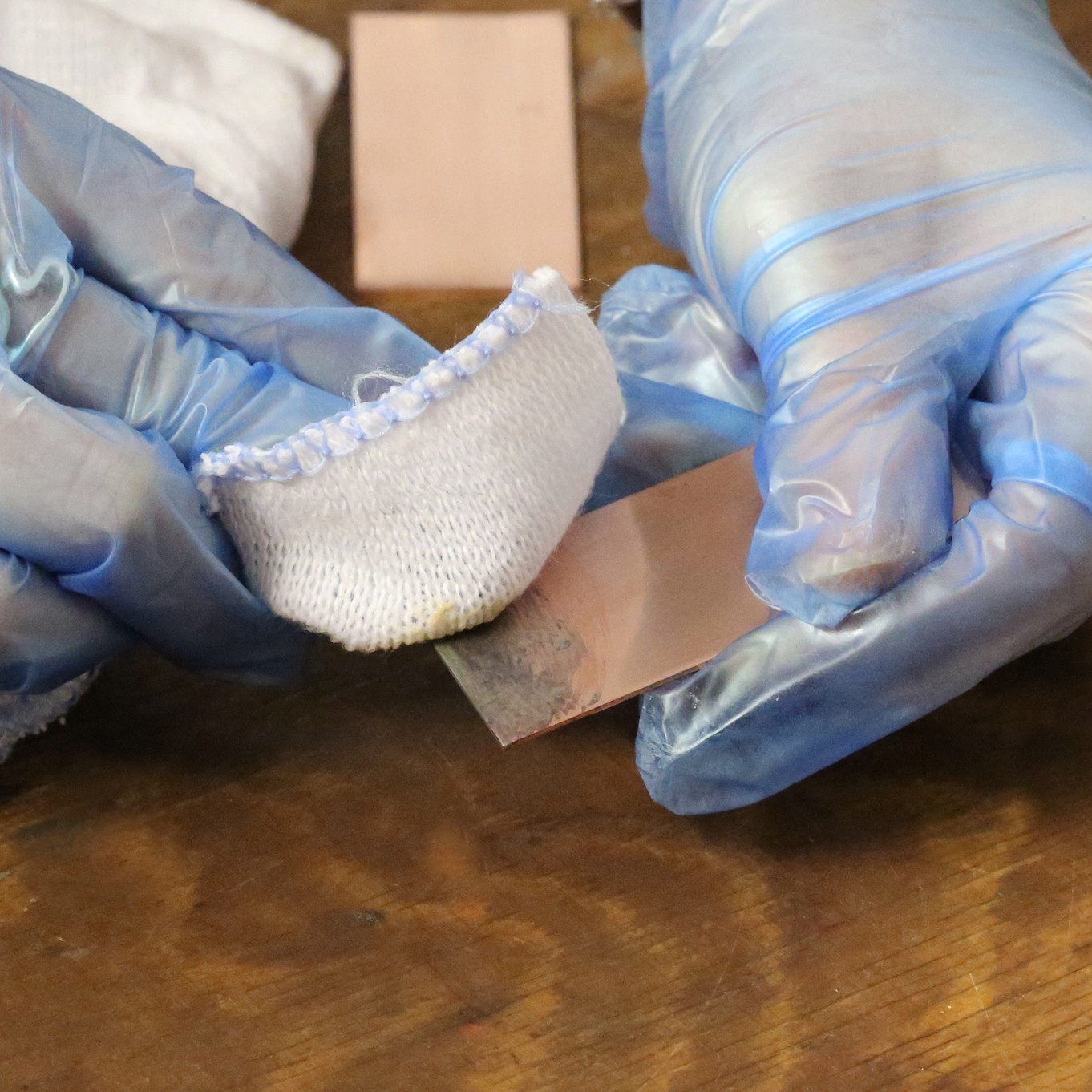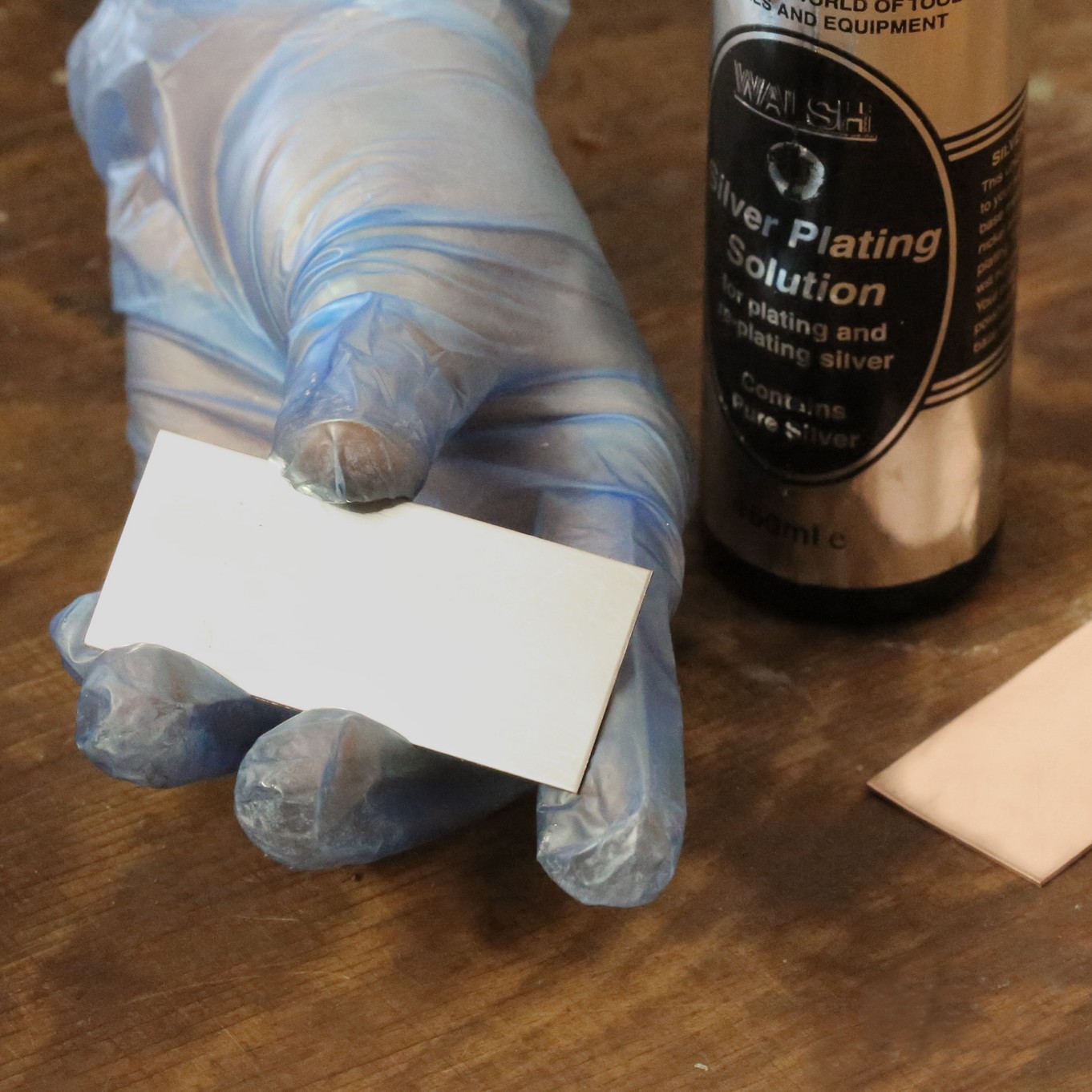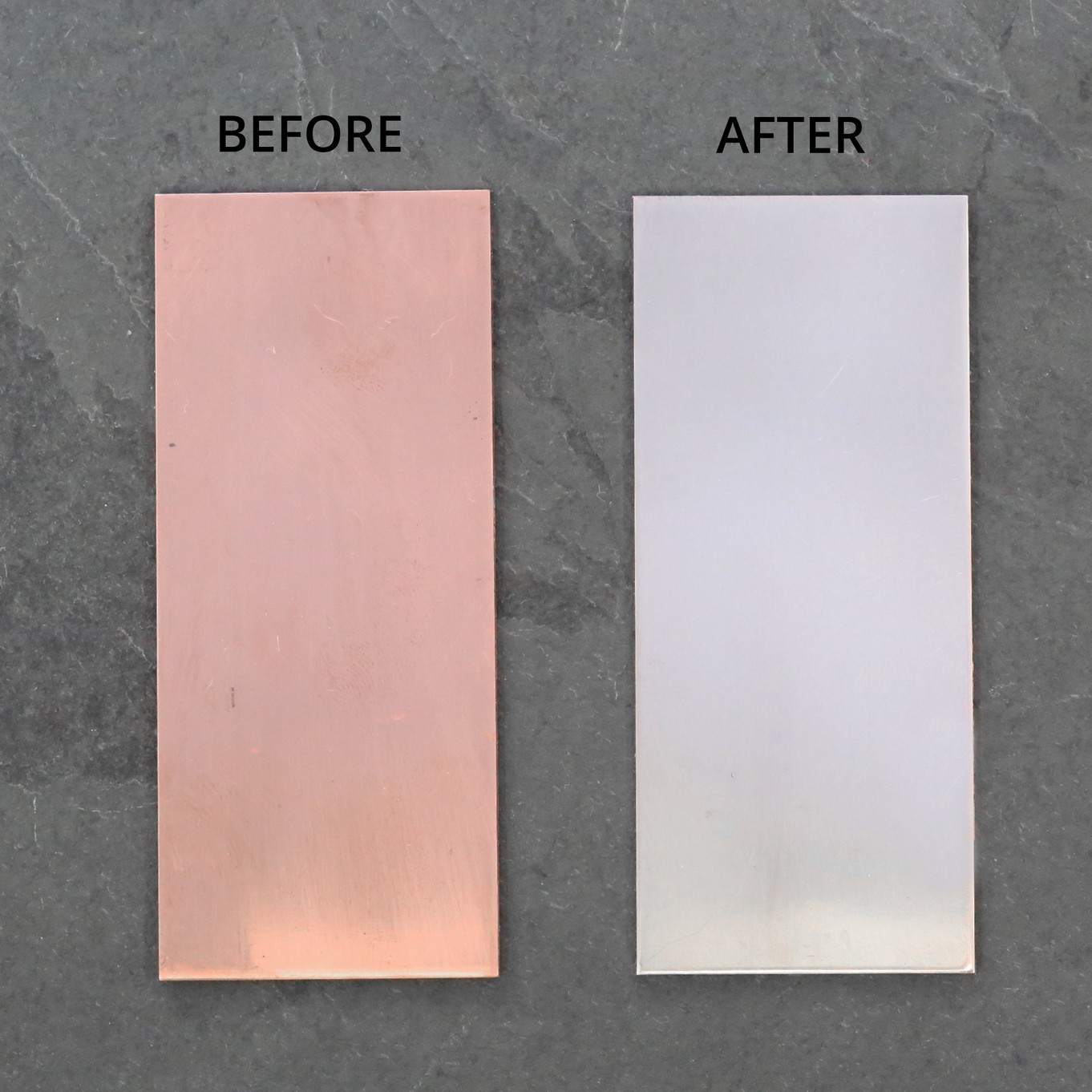VIDEO: How To Use Silver Plating Solution
What is silver plating solution?
Silver plating solution is for plating and re-plating silver and other base metals that contains copper content, allowing you to completely restore your dull looking pieces! The unique formula (formerly called Sheffco Silver Solution but now re-branded as Walsh Silver Plating Solution using the same formula and made in the UK).
On this page, we share with you a tutorial on how to apply silver plating solution and answer your common questions, as well as giving our tips and advice for achieving a professional result.
What can I use Silver Plating Solution on?
You can use silver plating solution on any metal that has copper content such as silverplate, brass, bronze and nickel. It can be used for re-plating tired looking silver plated jewellery as well as being ideal for bringing back some sparkle to dull looking metals such as silver plated photo or picture frames, silver plated table-wear and cutlery. Don't forget this solution will only work with base metals that contain copper - some tablewear is stainless steel that has been electroplated so the solution wouldn't work as steel doesn't contain copper. Alternatively if you have some costume jewellery in brass, copper or bronze, you can transform it into a silver colour for a new lease of life.
Watch our video tutorial on how to apply silver plating solution
Watch Quick Before & After Of Using Silver Plating Solution
Hannah from our team has a pendant that we believe has a brass base metal and the silver plating has worn away, so we thought we'd get out the silver plating solution to bring it back to life again! Watch the video to see it in action.
Frequently Asked Questions About Silver Plating Solution
How durable is the silver plating?
The plating result is permanent and will not chip, flake or peel. However, if it is a piece of jewellery you have applied it to then it will depend on the amount of wear and how much friction it comes into contact with (as with all silver plated jewellery items). Likewise if you polish it excessively you will also wear the plating away, but it can easily be re-applied.
Can I polish items that I’ve silver plated?
Yes you can. We’d recommend using our jewellery polishing cloth and gently polishing the item back to a high shine. If you polish the item too hard or too frequently the plating may begin to wear through, but if this happens you can easily just re-plate the item again.
Is it easy to use?
Yes, very! It literally takes seconds to transform an item. You don't need any technical knowledge or silversmithing experience, and the only equipment you do need is a soft cloth!
Is silver plating solution safe to use?
The silver plating solution is non-toxic and odour free. It is recommended you wear gloves and cover work surfaces to avoid possible staining (you may find you end up with stained yellowy fingers otherwise!).
Does it create a thick layer on the metal?
No. The plating is a molecular reaction which bonds the silver particles to the metal. You will not notice a visible layer, as you would with paint for instance, but you will see the colour of the metal transform. The finish will depend on the texture of the metal you apply it to - so a textured metal will keep its texture.
Will it make polish the metal from matt to a high shine?
This is a plating solution not a polishing solution. The finish will depend on the level of polish on the metal before plating. So if you apply it to a highly polished copper item your finish will be a highly polished silver, if however you apply it to a matt or satin-finished metal, the finish will still be matt or satin. You may notice some improvement in the shine as you buff it with a soft cloth after applying, and many worn plated metals will look much shinier simply because you have rejuvenated the silver plate. But it will not change the texture of the metal.
What is the shelf life of the solution?
As long as it isn’t opened, the silver plating solution doesn’t have a shelf life. Once opened, however, it depends on how much you have used and therefore how much air is in the bottle - air will slowly cause the solution to dry out. Having said that, members of staff here have bottles which have been open and used for 3+ years which are still going strong!
Is silver plating solution the same as electroplating?
Our silver plating solution offers an easy at home solution for re-plating and plating suitable metals. Electroplating is a different process which requires specialist equipment. Electroplating can also be used to plate items that would not ordinarily be able to be plated, by coating prior to plating with a layer of electrically conducting metal such a copper, which allows it to be silver plated.
To view our silver plating solution click here.
For any further advice regarding the contents on this page or for any other general jewellery making enquires, please feel free to get in touch, we would love to hear from you
Will Silver Plating Solution Prevent Allergic Reactions?
We often get asked whether applying silver plating solution to copper jewellery will prevent your skin from reacting to the metal. It is unlikely the solution will provide enough to stop the reaction however you can apply a layer of midas seal lacquer to your jewellery, to provide a barrier between the metal and your skin.
Although not marketed for the purpose of preventing allergies, the midas provides a clear, hard, abrasion-resistant finish to your jewellery and metal pieces. The team at Kernowcraft have used midas successfully to prevent allergic reactions from metals on belt buckles, poppers and watch backs.
Also in this section:
- Guide To Sanding & Polishing For Jewellery Making
- Hand Polishing Your Jewellery With Polishing Papers
- A Guide To Texturing Metals For Jewellery Making
- Top Tools For Making Textures On Metal
- Beginner's Guide To Chasing & Repoussé
- How To Make Easy Textured Earrings
- How To Make A Hammered Copper & Silver Heart Pendant
- How To Make A Textured Cuff Bracelet
- How To Make A Metal Leaf Decoration
- How To Use Doming Block & Punches For Jewellery Making
- How To Make Domed Metal Earrings With A Doming Block
- How To Engrave Your Drawings On Art Clay Copper
- Textured Washer Bracelet Tutorial With Guest Jeweller Laura Grey
- Barrelling Machine For Polishing Metal - Everything You Need To Know
- Tumbling Machine For Polishing Stones and Glass- Everything You Need To Know
- Polishing Jewellery Q&A With Stephen M Goldsmith
- Town Talk Products For Cleaning & Caring For Jewellery
- Creating A Resin Bird Pendant With Designer Sarah Hoare
- VIDEO: How To Create Patina With Liver Of Sulphur
- 2 Ways To Apply Liver Of Sulphur
- VIDEO: How To Use Silver Plating Solution
- How To Clean & Prevent Tarnished Jewellery
- Why You Need Anti Tarnish Paper Strips
- How To Use Midas Finish Seal Lacquer
- How To Use Renaissance Wax To Prevent Tarnished Jewellery
- VIDEO: Working With Crinkle Metal Sheet
- A Guide To Using Mokume Gane Metal For Jewellery Making
HAVE A QUESTION?
If you have any questions, feel free to get in touch with our friendly team who will be more than happy to give you advice over email or on the phone.
You can learn more and find inspiration by visiting our Jewellery Making Tutorials, Jewellery Making Kits and YouTube Channel. Don't forget to follow us on social media and tag us in your designs on Instagram & Facebook, we would love to see!








